Miller Hall
Introduction
Text-to-speech Audio
Images
Miller Hall in present day, home of admissions and the former Paul R. Stewart Museum.
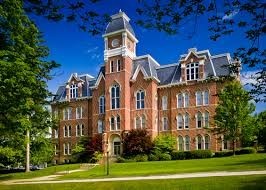
Miller Hall (Then)
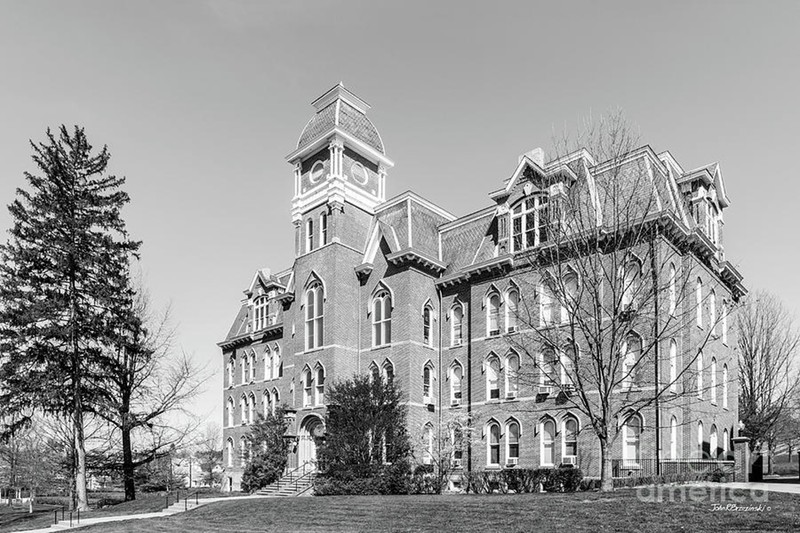
Alumni Hall (1905)
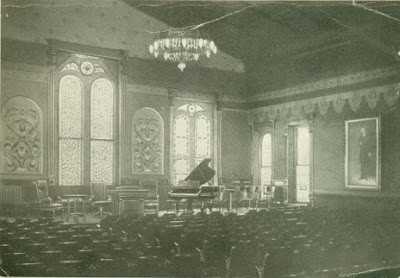
The library on the 3rd floor of Miller in 1905.
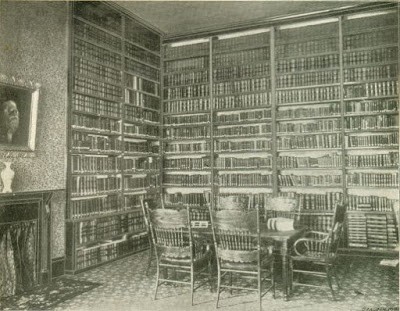
Philomanthean ("Philo") Hall [3rd-Floor Literary Room] (1905)
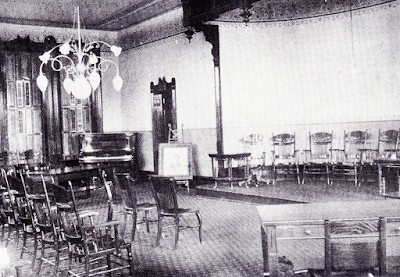
Miller Hall (Sketch)
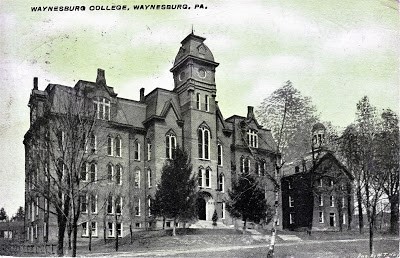
A picture inside Alumni Hall of a main stained glass window that reads, "Alumni Hall."
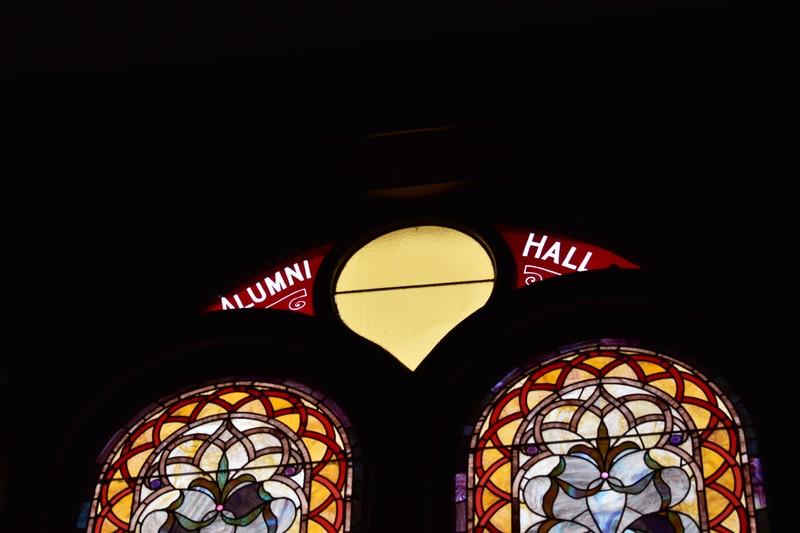
A full-room view of Alumni Hall in the afternoon.
.jpg)
A stained glass window with tributes and mentions of important people; Alfred B. Miller, William F. Capen, Clark S. Hackney, and Mrs. Emma Hoge.
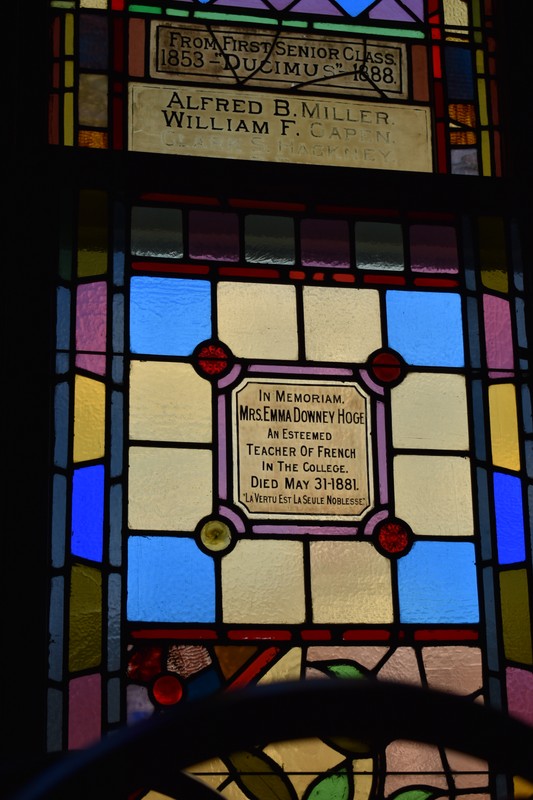
A scene on a stained glass window presented by James C. Work in honor of his mother Sarah Work.
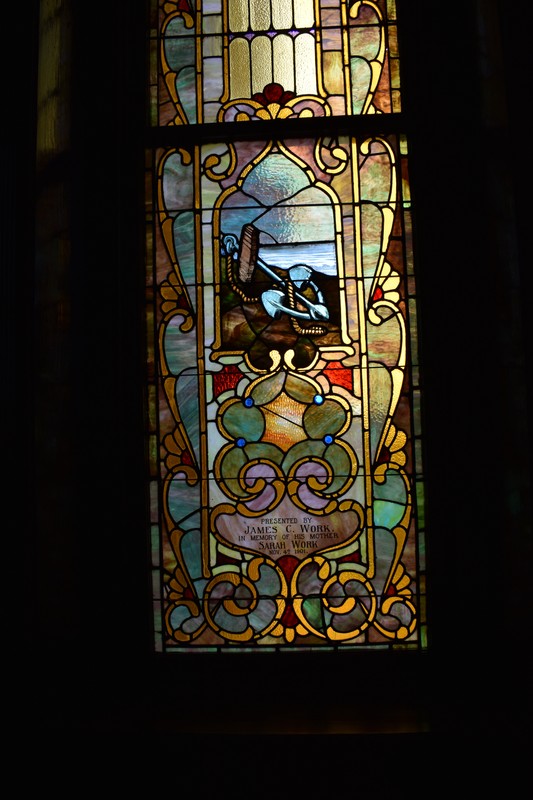
The main hall on the 1st floor of Miller Hall in present day.
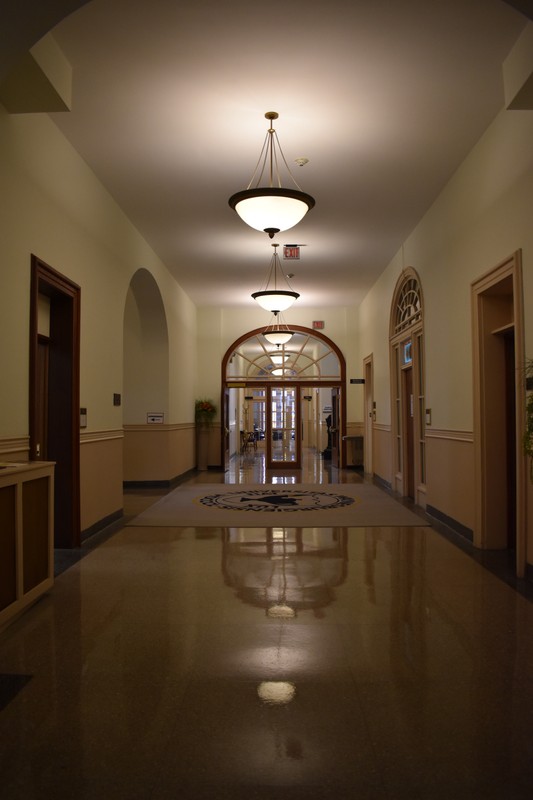
Here is a carved newel post on the staircase that is similar to the carved post in the Goodwin House.
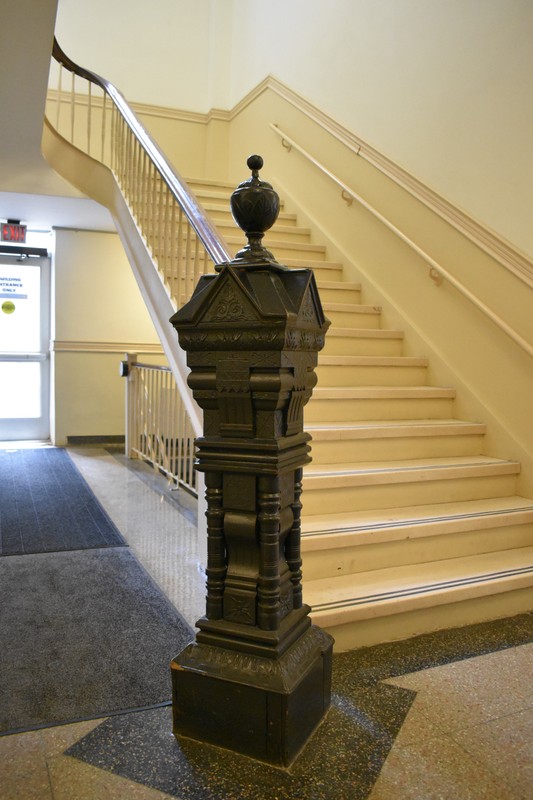
Here is the conference room on the first floor of Miller Hall, outside of the Provost's Office, with a specially designed stained-glass window.
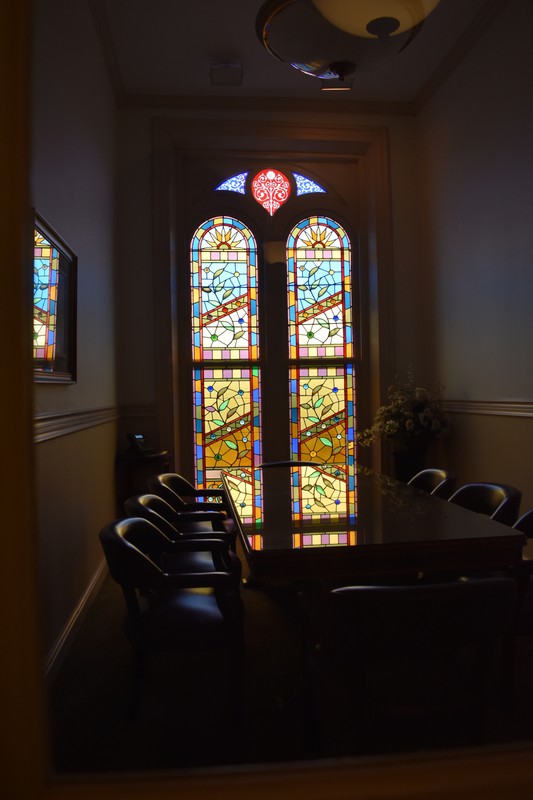
Backstory and Context
Text-to-speech Audio
As students filled Hanna Hall in the late 1800s, Waynesburg College sought a new addition to their, then, short list of facilities. The college’s president, Alfred Brashear Miller, encouraged the need for a second building. The need for this building was largely due to the rapid increase of enrollment after the Civil War, and the growing competition with neighboring schools, like Washington and Jefferson and West Virginia University. After the land was donated, Miller Hall was approved by trustees in 1874 and the journey began.
The plans for Miller Hall were designed by Pittsburgh, Pennsylvania architect J. W. Drumm. The style of the building was based on the Mansard style and the “Second Empire", named after the French Second Empire of Napoleon III. The Mansard style was created by French architect Francois Mansart. This time of architecture, from 1872 to 1913, was also called the “Age of Elegance”. The dual French influence in Miller Hall fashions tall stained-glass windows, towers, sandstone accents, and a high Mansard roof. Symmetry and extravagant structure as well as high ceilings were key elements of the style.
Miller Hall took twenty-five years to be completed and ready for students. Twenty-five thousand dollars was needed for the base funding of the project, and as the college paid for each part of its construction, it ended up costing somewhere around sixty-five thousand dollars. Its construction officially began on September 10th, 1879, going through multiple contractors. It was finally finished and dedicated on June 28th, 1899.
The building sits four floors tall, with ceilings that increasingly get higher with each floor. The original architecture boasts a 158ft long and 54ft wide mansard roof and a cross-section measuring 86ft long and 50ft wide. The basement was originally used for storage. The first floor consisted of 18-foot ceilings and housed classrooms, a rotunda, a laboratory, and one administrative office for the president. The second floor held even higher ceilings as well as the library, chapel, and more classrooms. Finally, the third floor had the highest and most decorated ceilings, in Alumni Hall and the literary societies. There were two natural gas fireplaces in the president’s office and the library. As for the rest of the building, five chimneys and wood and coal-burning stoves were used to keep warm.
Alumni Hall is one key element of Miller Hall. It was created with the help of Alumni who donated in subscriptions of as little as $50. The hall was created to be a magnificent, extravagant room to hold commencement, literary readings, and speakers. Each stained glass window in the hall is different, with highlights of the community and donors. The hall held a stage, an extremely high ceiling, wood detailing, and enough seats for 1,000 people. It was meant to be the crowning jewel of Miller.
Several large milestones occurred in the early 1900s at Miller Hall. Electricity and the telephone made their debut to Miller in 1904. In 1910 two fire escapes were added, and in 1920, the fireplaces and stoves were replaced by central heating. Larger renovations were made to the building interior from 1963-1971. All of the floors and stairways were fireproofed, and Alumni Hall was given a facelift. Alumni Hall was given a new stage, seats, and carpet. The original stained-glass windows of Miller were all converted to regular panes of glass, except for those sitting in Alumni Hall. The rooms that were once used as classrooms were converted into administrative offices, which meant an almost total remodeling of the second and first floor. As the decades went on, fluorescent lights were installed, and ceilings were lowered to catch up with the times. In 1971, on the second floor, the “Martin Room” was created in honor of alumni Edward Martin, which serves as a lavish conference room.
Miller Hall now serves as the main administrative building for the university and holds the university's museum on the lower level, the basement. The museum not only holds artifacts from the history of the university but also from the surrounding area of Greene County and varying pieces from Waynesburg University alumni. Miller also still uses several classrooms for the Education Department and serves as the headquarters for admissions. The university offers campus tours and guided, or self-guided, tours through the museum.
Sources
, NPS. National Register of Historic Places Inventory -- Nomination Form, National Register of Historic Places. July 26th 1977. Accessed April 4th 2021. https://gis.penndot.gov/CRGISAttachments/SiteResource/H000661_01H.pdf.
Pastorius, Mary Beth. MILLER HALL, Waynesburg Matters. April 13th 2017. Accessed April 4th 2021. http://waynesburgmatters.blogspot.com/2017/04/miller-hall.html.
Dusenberry, William Howard. The Waynesburg College Story (1849-1974). The Kent State University Press, 1975.
Mad Anthony Facebook. December 16th, 2013. Accessed April 20th, 2021. https://www.facebook.com/MadAnthonyYrbk/.
Pastorius, Mary Beth. MILLER HALL, Waynesburg Matters. April 13th 2017. Accessed April 4th 2021. http://waynesburgmatters.blogspot.com/2017/04/miller-hall.html.
Pastorius, Mary Beth. MILLER HALL, Waynesburg Matters. April 13th 2017. Accessed April 4th 2021. http://waynesburgmatters.blogspot.com/2017/04/miller-hall.html.
Pastorius, Mary Beth. MILLER HALL, Waynesburg Matters. April 13th 2017. Accessed April 4th 2021. http://waynesburgmatters.blogspot.com/2017/04/miller-hall.html.
Pastorius, Mary Beth. MILLER HALL, Waynesburg Matters. April 13th 2017. Accessed April 4th 2021. http://waynesburgmatters.blogspot.com/2017/04/miller-hall.html.
Pastorius, Mary Beth. MILLER HALL, Waynesburg Matters. April 13th 2017. Accessed April 4th 2021. http://waynesburgmatters.blogspot.com/2017/04/miller-hall.html.
Taken by Rachel Redinger. April 21st, 2021.
Taken by Rachel Redinger. April 21st, 2021.
Taken by Rachel Redinger. April 21st, 2021.
Taken by Rachel Redinger. April 21st, 2021.
Taken by Rachel Redinger. April 22nd, 2021.
Taken by Rachel Redinger. April 22nd, 2021.
